Liquid silicone rubber (LSR)[1] is quickly replacing plastic for injection molding processes in industries such as automotive, appliances, textiles, food and consumer goods. Manufacturers are turning to LSR because it offers advantages over plastic in terms of design, consistency, clarity, quality, reliability, and cost.
Many industrial manufacturers think of switching to LSR but wonder how this liquid stuff can actually benefit their operations. If you are a manufacturer willing to learn more about this innovation, keep reading.
In this post, we are going to shed light on the advantages of using liquid silicone rubber in injection molding processes. Hopefully, here you will find answers to some of your nagging questions.
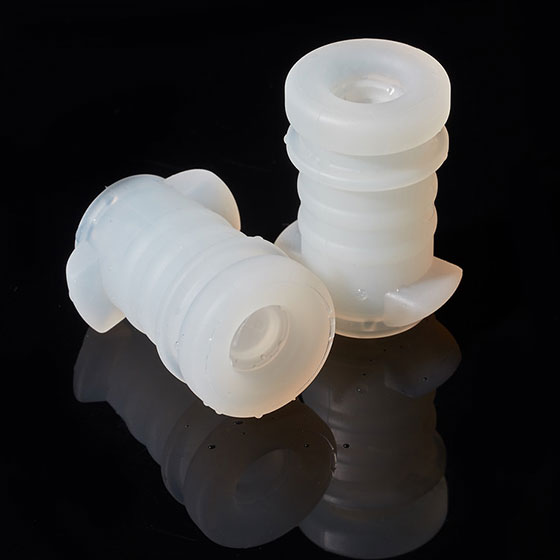

With its ability to withstand temperatures ranging from -60°C to 180°C, liquid silicone rubber is ideal for manufacturing components that require exposure to extreme temperatures. It’s impressively durable, and therefore suitable for sturdy components.
Heat solidifies LSR, so sink is not an issue with the material. When it comes to producing parts with thicker features, this material performs remarkably better than the average thermoplastic material.
The process of combining LSR with different thermoplastics does not require a priming step. Designers can just add the LSR part to the surface of the other material for functional purposes.
No need to use an additional material to fabricate the substrate, and the heat generated by the vulcanization process does not affect the quality of LSR. This facilitates economical manufacturing of small, lightweight parts. To match the application, however, selecting the right LSR material is crucial.
Liquid silicone rubber is gas permeable, which means the material is not affected if natural gasses move through it. This property makes LSR a top candidate for components used in cooking appliances, gas water heaters, gas washers, gas furnaces, and gas grills. Given the fact that LSR is tasteless and odorless, kitchen appliances that contain the material do not affect the taste or smell of food.
Thanks to its high resistance, LSR is widely used as a sealing material for applications that are intended to be exposed to water and ozone. The material also offers excellent flexibility and tensile strength. It has a low compression set ranging from 15% to 20% and resists deformation when put under constant force and pressure.
The material is more forgiving, so designers enjoy more flexibility. At room temperature, its elongation ranges from 400 to 700%, making it an ideal material for valves, seals and diaphragms and other components that are built to last.

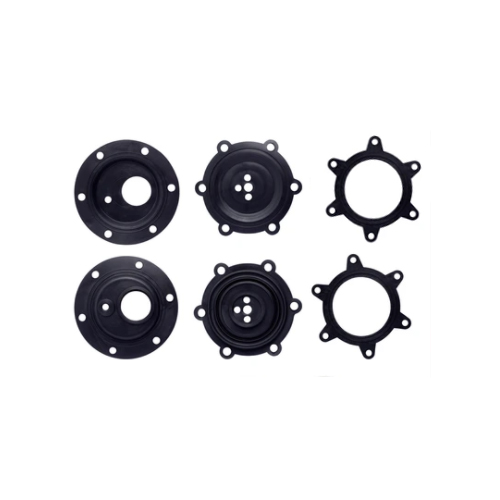
LSR is a high-quality food grade material because it is entirely tasteless and odorless. It is often used in household utensils, baby care products, and seals for cooking appliances.
It is also used in the production of lenses and light covers because in terms of light transmission, the material is second only to glass.
LSR has an edge over other rubber materials in terms of compatibility with inorganic acids and bases such as arsenic acid, acetic acid, sulfuric acid and boric acid. The material is chemically inert mostly due to its silicone-oxygen backbone. Due to this inertness, LSR is by far the best candidate for medical applications, food, and silicone prototyping.
In a cleanroom, special airflow techniques and filters are used to reduce contaminants such as airborne particles, dust, bacteria and pathogens.
Liquid silicone rubber is biocompatible and hypoallergenic, and therefore the best material for manufacturing applications and components with hygienic requirements, such as medical and surgical devices, diagnostic products, food products, and wearable healthcare devices.
One of the major challenges for the manufacturers of medical products is to avoid contact of the products with living tissue. Living tissue can adversely affect the material, and the material can also affect or irritate the tissue. Dust, grease and airborne particles can also cause contamination.
Because of its elastomeric composition, LSR resists bacterial growth. Tests have shown that LSR is exceptionally compatible with the human body and tissue.
A material used for manufacturing medical devices must withstand exposure to harsh chemicals, because the process of disinfecting these devices may involve the use of chemicals. Exposure to UV radiation can break down the material or change its color. In such cases, manufacturers find LSR very convenient.
LSR is a great solution for any industry that needs to stick to strict sanitary guidelines. It is mold-resistant, and therefore widely used in the production of dishwasher gaskets, showerheads, cleaning supplies, and cooking utensils.

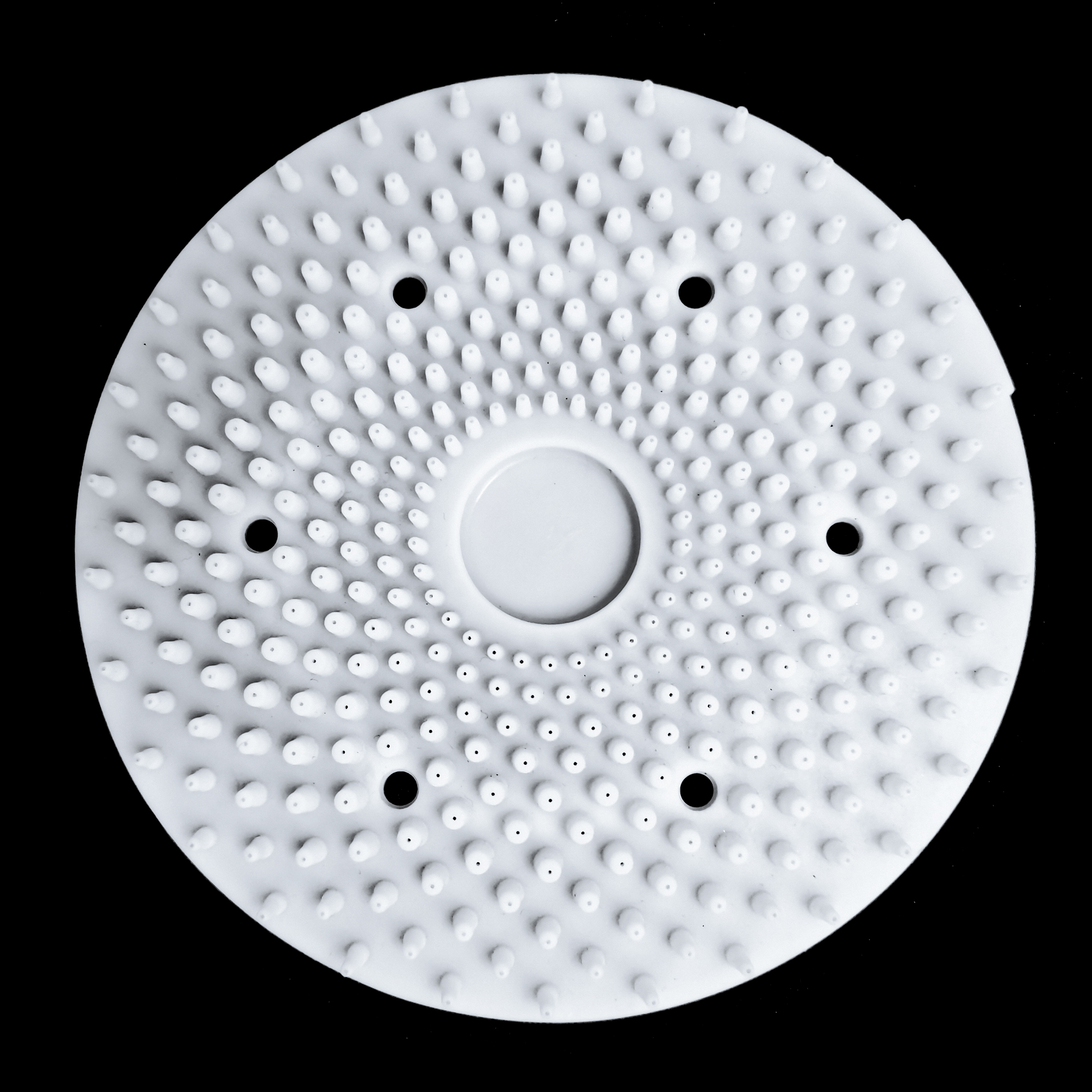
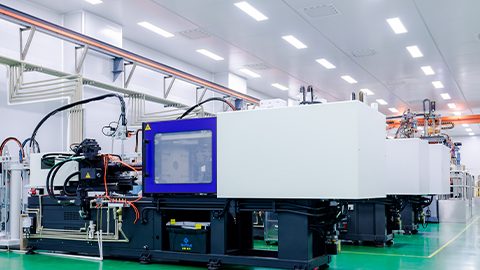
In a competitive economy, manufacturers put a lot of emphasis on productivity. High-volume production allows a company to introduce new items, market them faster and have an edge over the competitors. LSR injection is a smart way to produce more while maintaining a high degree of intricacy and uniformity of the products.
Thanks to its exceptional durability and flexibility, LSR is the material of choice for industries that need to produce large numbers of identical parts in one run. It’s convenient not only for one-shot and two-shot injection molding processes, but also for overmolding that involves molding silicone components onto plastic or metal parts.
The material is now widely used for high-volume manufacturing of complex components in industries such as automotive, medical devices, and electronics. Some manufacturers start with room-temperature vulcanizing silicone (RTV) and then switch to LSR as demands soar.
To evaluate the clarity of a material, a number of different properties are used: light transmission, percentage of haze, reflective index, yellowness index, and Abbe number. In terms of clarity, optical LSR is superior to glass in all properties, except yellowness index and percentage of haze.
Liquid silicone rubber is translucent, and therefore offers unlimited pigment options. This quality makes it an ideal material for manufacturing components in any color imaginable.
Optical silicone is quickly replacing glass in many applications because silicone enhances performance, design and project ideas.
Thanks to its versatility, LSR has an edge over glass in almost all mechanical, dimensional and thermal properties. It is lighter than plastic and glass, and therefore ideal for products that must be lightweight.
LSR remarkably reduces the risk of breaking. It is stiffer than plastic and more flexible than glass, so it’s great for products that may be exposed to vibrations.
It remains optically stable even when exposed to extreme temperatures. Rapid shifts in temperature do not affect the clarity of the material. Even long-term exposure to ultraviolet rays does not affect the material’s transparency, so it’s great for both indoor and outdoor use.
Clear liquid silicone is super easy to work with and offers great design potential. Due to its low viscosity, LSR fills a mold smoothly, making it easy to form complex shapes with fine details.
As it cools, clear liquid silicone remains dimensionally stable. This stability makes LSR an ideal material for components with tighter tolerances. And once molded, the components do not usually require additional polishing, and that reduces secondary costs.
Applications of clear LSR include lighting, automotive, and consumer goods. It is a widely used material in lenses, bulbs, and optical components. Many reputable manufacturers of these products are switching from glass to LSR.
In the automotive industry, clear LSR is used mostly for producing headlight casings and other transparent parts. It is becoming one of the most frequently used materials in consumer goods such as novelty items and electronics.

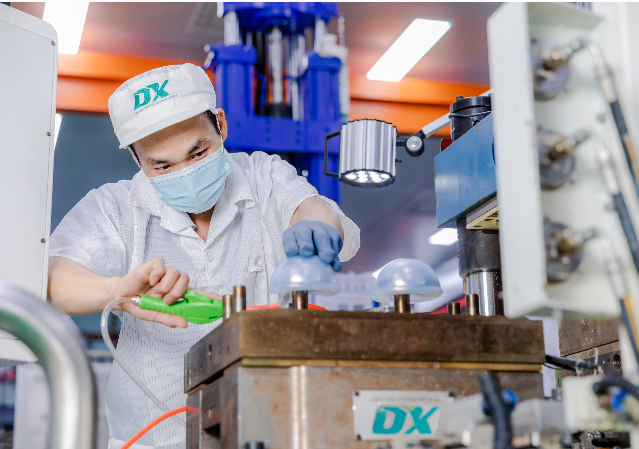
While liquid silicone molding has higher startup costs than other rubber molding methods, the procedure can be cost-effective for long-term and large-scale manufacturing.
Once a product has been molded with LSR, manufacturing the product in large numbers is very economical. Due to the material’s overmolding capabilities, no additional step is required in the manufacturing process, and therefore manufacturers end up saving time and money.
With LSR, exceptional durability and tight tolerances can be achieved. Over time, that can reduce product failure risks, help you bolster the quality of the product, and avoid liabilities.
While the material is cost-efficient particularly for high-volume production, it can actually keep the cost low for medium-volume production. You are likely to find LSR cost-effective even if you are aiming for 10,000-15,000 parts.
With LSR, cycle times are measured in seconds, not minutes. The shorter cycle times can foster productivity, which in turn reduces manufacturing costs. The procedure can be fully automated, which can remarkably reduce labor costs.
Liquid Silicone Rubber allows manufacturers to create custom shapes with little to no waste. With precise applications of sophisticated automation, about 100% of the material is utilized in the molding process.
In the last decade, there has been some remarkable progress in LSR formulations, and the material has emerged as a better alternative to plastic for a wide range of industries. If you are engaged in large-scale manufacturing, chances are that this two-component platinum-cured silicone will take your operations to the next level.
For industrial manufacturers, choosing the right material is of utmost importance. In order to select the ideal material, industries must perform careful evaluations of the available options. Define your performance standards and then perform a thorough cost-benefit analysis before you make a switch.
[1]From wikipedia. Injection Molding of Liquid Silicone Rubber. Wikipedia.
DX provides you with all-around silicone product customization services for valued customers like you.